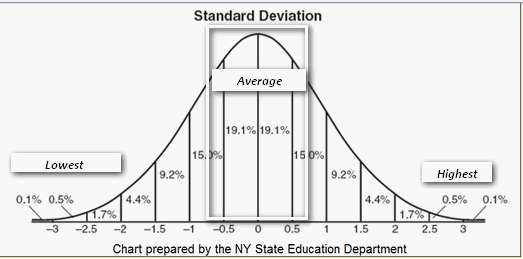Ergo Concept-Humans are the Same

Humans are the Same Within Limits
Humans have limits. Although there is a standard distribution of people, some who are in the 90% percentile of a certain range and some in the 10% range, there is a range and it is fairly set for each human capability. Whether you consider strength, speed, reaction-time, perception, intelligence, or any other area of unenhanced human performance, the scores fall into a Normal Curve when the whole population is considered.People can only go so fast, go so long without water, reach so high or swim so far. If you are a high performer in some areas, you are generally not so good in others, but you may generally fall anywhere within the Normal Curve. Once the limits of the curve are determined the scattering of abilities needs to be tracked. We need to determine what average is.

This determination is what allows general solutions to problems to work – for most people. The people in the 10% ranges will be considered outliers, people out of the ordinary. These are the Olympic atheletes and geniuses, the dancer with two-left feet and the person with no depth perception.
When we know what the limits of ability are, we can begin to determine what true average performance is. This allows us to begin to design equipment, tools and jobs for the average person.
What is Average?
When teachers looks at a class, they are not looking for a general population average. They look for the class average. This explains both the attraction and the results acheived by the program Are You Smarter Than a Fifth Grader? The adults in the program are outside the population being considered. They are fish out of water. Their fifth grade was probably nothing like the fifth grades of today. The subject may have been different and many of the facts almost certainly were. The terminology and processes in math alone have changed drastically in the past 15 years.When a job is being filled the applicant pool is narrowed by the qualifications. The interviewer will select a portion of the normal distribution and it will be canted towards the people who have the desired skills and aptitudes. The interviewer hopes to see only those above 50% of the total population in the areas he needs for the job.
Ergonomics and Averages
The ergonomist learns essential capabilities and limitations for humans in terms of position, repitition, cognitive requirements, speed, and force in order to aid in preventing injury and design tasks that are more friendly to the person.Human Beings have a marvelous and flexible makeup. They can do many things that are totally unexpected. Anyone who has seen Cirque de Soliel knows this. Those performers are true outliers however. The ergonomist is more frequently concerned with things that happen in the daily lives of the more average person.
The ergonomist learns essential capabilities and limitations for humans in terms of position, repitition, speed, sensory perception and force in order to avoid injury.
From a physical point of view, the ergonomist is most concerned about the people in the higher and lower percentiles. These are the ones who will have most difficulty with tools, equipment and presentation that are designed for the average person.
Normal keyboards do not work well for those with very narrow or wide shoulders. Standard desk heights are problematic for the tallest and the shortest. Chairs cause difficulty for long-legged and short-legged people, for wide and narrow people, and for long trunked and short trunked people.
Lighting can be a problem for those with very sensitive eyes who need dimmer or scattered light and for those whose eyes require more light.
Standing work heights can be a problem for the tall and very tall – especially low tasks or low workstations. They can also be a problem for the shorter person if the work is placed high.
Knowing the human ranges of capability and size of people and being able to identify what is not average gives the ergonomist a key tool in looking at and modifying work situations that is particularly helpful when more than one person shares a work area. If the sizes of the people are known the ergonomist can develop modification that may be individual to all or identify equipment that has the ability to easily adjust to fit the needs for each person.
This site needs an editor - click to learn more!

Related Articles
Editor's Picks Articles
Top Ten Articles
Previous Features
Site Map
Content copyright © 2023 by virginia hixson. All rights reserved.
This content was written by virginia hixson. If you wish to use this content in any manner, you need written permission. Contact
BellaOnline Administration
for details.


